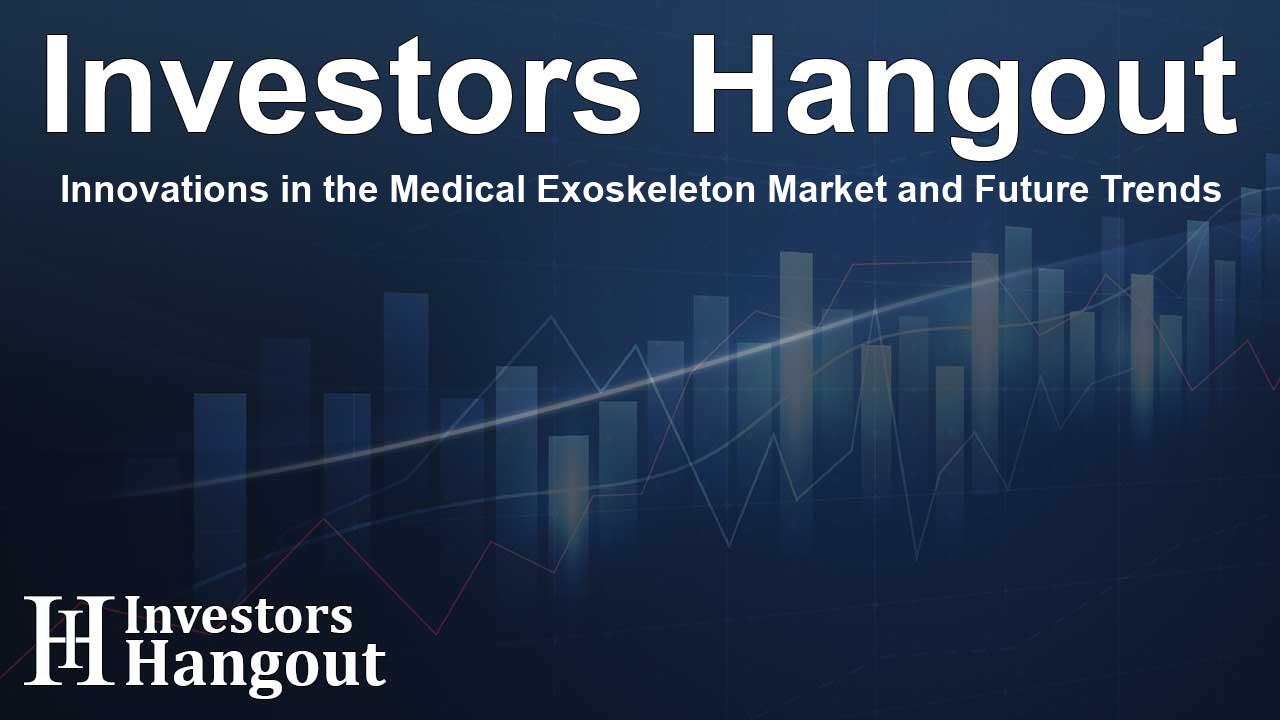Innovations in the Medical Exoskeleton Market and Future Trends

Transforming Lives: The Rise of Medical Exoskeletons
The medical exoskeleton market is booming, fueled by advancements in technology and a growing need for rehabilitation solutions. Recent reports estimate that the market will grow by USD 2.87 billion from 2024 to 2028, with an impressive compound annual growth rate (CAGR) of about 55.77%. This growth is largely attributed to rising cases of spinal cord injuries and the increased availability of assistive technologies that aid mobility.
Driving Forces of Market Growth
As the landscape of healthcare evolves, medical exoskeletons are becoming crucial tools in enhancing rehabilitation processes. Noteworthy innovations by companies like Ottobock and German Bionic aim at developing lighter, more user-friendly devices. These products are designed with features that prioritize adjustability and ease of use, catering to the diverse needs of patients. With a focus on technological advancements, including smart sensors and AI capabilities, these devices are revolutionizing the rehabilitation experience.
The Impact of AI in the Medical Exoskeleton Sector
Artificial Intelligence (AI) plays a pivotal role in the continuous improvement of medical exoskeletons. By utilizing machine learning algorithms, companies can analyze user data, enhancing the customization of rehabilitation programs. This level of personalization not only improves patient outcomes but also transforms how caregivers interact with patients, making therapy sessions more effective and meaningful. The integration of AI and cloud computing enables remote diagnostics and monitoring, allowing for timely interventions and better care management.
Challenges Facing the Market
Despite the exciting prospects, the medical exoskeleton market faces notable challenges. A significant hurdle is the shortage of well-trained caregivers who can assist patients in utilizing these devices safely. This gap in training often leads to potential risks for users, emphasizing the need for organizations to establish comprehensive training programs. Companies like ReWalk Robotics are making strides to address these challenges through specialized training initiatives aimed at ensuring both caregivers and patients can navigate the use of exoskeletons safely.
Insights into Market Segmentation
The medical exoskeleton market is diverse, featuring various segments based on mobility type, technology, and geography. Mobility types can be classified into mobile and stationary exoskeletons, each serving unique operational roles. The technological spectrum includes powered and passive exoskeletons, showcasing the advancements in manufacturing and functionality.
Growth in Various Sectors
Not only are medical exoskeletons revolutionizing healthcare, but they are also making inroads into industrial applications. Sectors such as construction and manufacturing are increasingly adopting exoskeleton technology to enhance workplace safety and efficiency. These devices help reduce the physical strain on workers, significantly decreasing the likelihood of injuries related to heavy lifting and repetitive tasks.
Leading Companies in the Market
A multitude of companies are at the forefront of developing and promoting medical exoskeletons. Key players include Bionik Laboratories Corp., Cyberdyne Inc., Ekso Bionics Holdings Inc., and ReWalk Robotics Ltd., among others. These organizations are committed to enhancing the capabilities of exoskeleton technology, offering innovative solutions that improve patient rehabilitation and workplace safety.
Future Projections
The future of the medical exoskeleton market looks promising. With continuous technological improvements and increasing investments in research and development, the exoskeletons of tomorrow will likely be lighter, smarter, and more versatile. As companies innovate, the potential applications for these devices will expand beyond rehabilitation to assist daily activities, thus enhancing life quality for individuals facing mobility challenges.
Frequently Asked Questions
What is the projected growth of the medical exoskeleton market?
The medical exoskeleton market is projected to grow by USD 2.87 billion from 2024 to 2028.
How does AI impact medical exoskeletons?
AI significantly enhances the functionality of medical exoskeletons by enabling personalized rehabilitation programs and remote monitoring of patient data.
What challenges does the medical exoskeleton market face?
A critical challenge is the shortage of trained caregivers who can assist patients in safely using these devices.
Who are the key players in the medical exoskeleton market?
Prominent companies include Bionik Laboratories, Cyberdyne Inc., and Ekso Bionics, all leading the way in innovation.
What are the applications of medical exoskeletons outside healthcare?
Medical exoskeletons are also used in industrial sectors to enhance safety and efficiency, reducing injury risks for workers.
About Investors Hangout
Investors Hangout is a leading online stock forum for financial discussion and learning, offering a wide range of free tools and resources. It draws in traders of all levels, who exchange market knowledge, investigate trading tactics, and keep an eye on industry developments in real time. Featuring financial articles, stock message boards, quotes, charts, company profiles, and live news updates. Through cooperative learning and a wealth of informational resources, it helps users from novices creating their first portfolios to experts honing their techniques. Join Investors Hangout today: https://investorshangout.com/
Disclaimer: The content of this article is solely for general informational purposes only; it does not represent legal, financial, or investment advice. Investors Hangout does not offer financial advice; the author is not a licensed financial advisor. Consult a qualified advisor before making any financial or investment decisions based on this article. The author's interpretation of publicly available data shapes the opinions presented here; as a result, they should not be taken as advice to purchase, sell, or hold any securities mentioned or any other investments. The author does not guarantee the accuracy, completeness, or timeliness of any material, providing it "as is." Information and market conditions may change; past performance is not indicative of future outcomes. If any of the material offered here is inaccurate, please contact us for corrections.